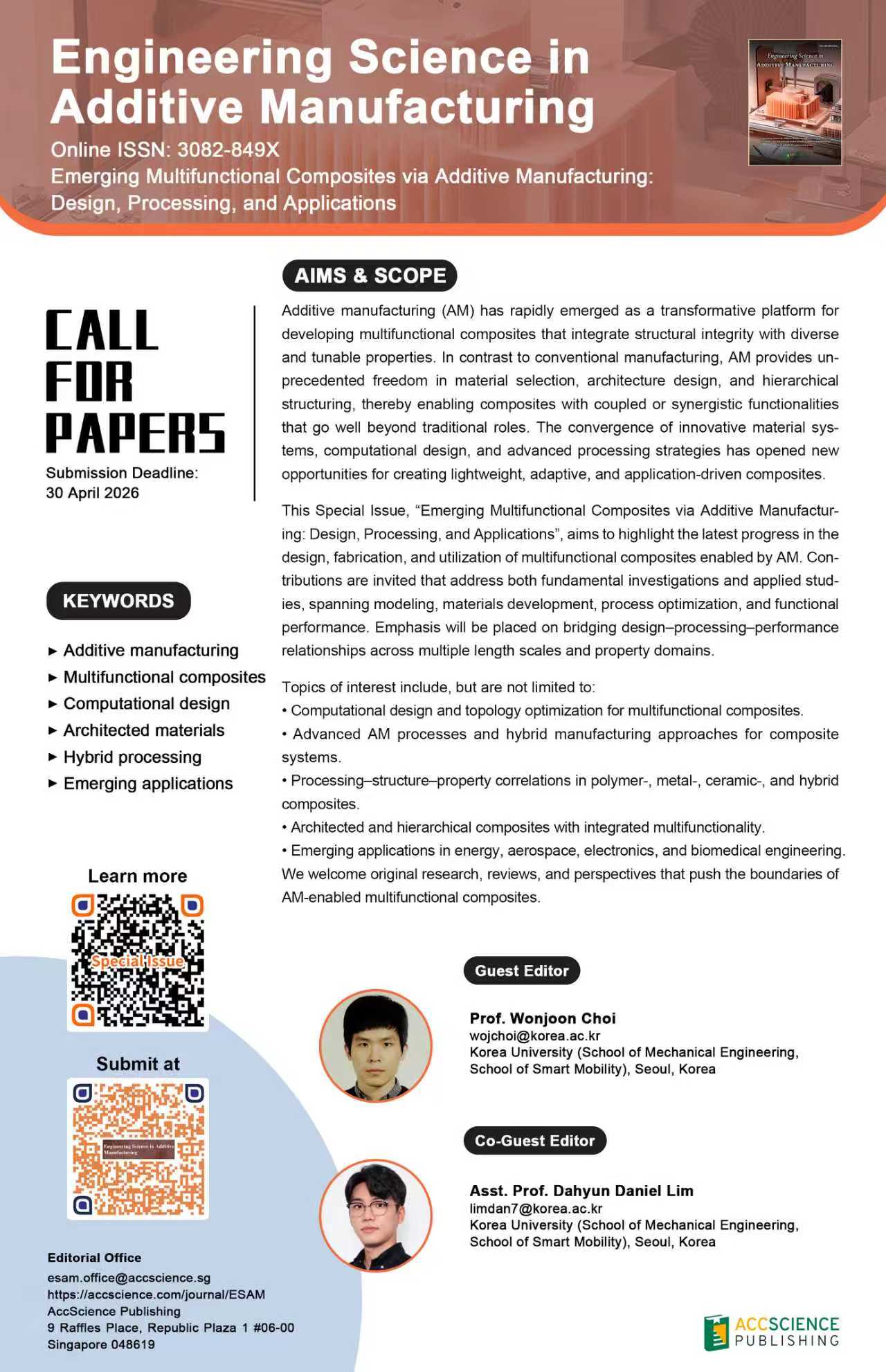Emerging Multifunctional Composites via Additive Manufacturing: Design, Processing, and Applications

Additive manufacturing (AM) has rapidly emerged as a transformative platform for developing multifunctional composites that integrate structural integrity with diverse and tunable properties. In contrast to conventional manufacturing, AM provides unprecedented freedom in material selection, architecture design, and hierarchical structuring, thereby enabling composites with coupled or synergistic functionalities that go well beyond traditional roles. The convergence of innovative material systems, computational design, and advanced processing strategies has opened new opportunities for creating lightweight, adaptive, and application-driven composites.
This Special Issue, “Emerging Multifunctional Composites via Additive Manufacturing: Design, Processing, and Applications”, aims to highlight the latest progress in the design, fabrication, and utilization of multifunctional composites enabled by AM. Contributions are invited that address both fundamental investigations and applied studies, spanning modeling, materials development, process optimization, and functional performance. Emphasis will be placed on bridging design–processing–performance relationships across multiple length scales and property domains.
Topics of interest include, but are not limited to:
• Computational design and topology optimization for multifunctional composites.
• Advanced AM processes and hybrid manufacturing approaches for composite systems.
• Processing–structure–property correlations in polymer-, metal-, ceramic-, and hybrid composites.
• Architected and hierarchical composites with integrated multifunctionality.
• Emerging applications in energy, aerospace, electronics, and biomedical engineering.
We welcome original research, reviews, and perspectives that push the boundaries of AM-enabled multifunctional composites.



